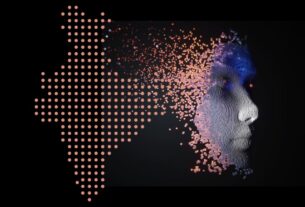Computational photography uses software to digitally enhance photographs and has reduced the use of handheld cameras.
Shyam Phani, a photographer, who started using an iPhone as his primary photography tool replacing his previous camera said that he feels confident with his iPhone in any situation, reducing the need for a handheld camera.
Mobile cameras are easy to handle. “Because of advancement in quality of smartphone photography, some shots taken in iPhone can be better in dynamic range (In photography, the “dynamic range” is the difference between the darkest and lightest tones in an image, generally pure black and pure white) than my regular camera,” he said.
Many photographers say that the leap in computational photography is convincing enough to use smartphone cameras as a go-to option.
Pankaj Tottada, a professional event photographer said that he uses a hybrid model using both a smartphone and a camera for work.
“Previously it was not possible to use smartphones as photography tools for professional work. But the evolvement of the smartphone cameras in recent times has made it possible for them to use them for workflow. The flexibility a smartphone brings into the workflow is something a handheld camera can’t do,” he added.
Pankaj uses Google Pixel 6 and Canon 5d Mark 4 for his work.
A spokesperson of the Retailers Association of India (RAI), said that everyone uses smartphones nowadays and the sales of smartphones are at an all-time high in India. He added that slowly the need for a camera for a casual photographer has decreased as photos can be taken on smartphones as well.
Only a few people who need a handheld camera for their professional work are still buying cameras. The sales of handheld cameras have decreased significantly over time. Particularly the sales of low to mid-range price segment by 35 percent in the last five years. There is also a huge decrease in casual photographers buying handheld cameras, he said.
Khalid Khan, a casual photographer who likes to use his handheld camera said that even though the improvement in picture quality of smartphone cameras is replacing Digital Single-Lens Reflex cameras (DSLRs) for some photographers, he prefers to use DSLR.
Khan likes the personal touch-up to his own clicked photos – in terms of colour grading and editing the photo. There is less space for personal touch up in computational photography as software in smartphones does most of the editing work in photography, he said.
R.Venkatesh Babu, Department of Computational and Data Sciences professor, Indian Institute of Science (IISC) said, “Traditionally the photography was hardware-dependent and smartphones with their space constraints couldn’t take on traditional DSLR. A smartphone camera’s hardware is inferior to the DSLR. But in the last decade, the leap in artificial intelligence, computer vision and machine learning fields made it possible for a smartphone camera to be significantly powerful over their predecessors.”
Computational photography is nothing but using Artificial Intelligence (AI) and Machine Learning (ML) techniques to enhance the processing pipeline of the smartphone cameras to capture more light and dynamic range. The System on chip (sop) on smartphones currently has its neural processors which are specifically designed to process the image pipeline. The advancement of computational photography in recent years has almost closed the gap between traditional DSLR and a smartphone cameras, he further added.
According to the data from the camera and imaging products association (CIPA), the sales of the camera with built-in lenses decreased by more than fifty percent in 2016.
Computational photography is first implemented by Google pixel smartphone as HDR+ in 2016 and Apple iPhone implemented a similar version of it called Smart HDR in 2017 with their smartphone iPhone XS and since then every other smartphone implemented some version of it, said Shyam Phani.




